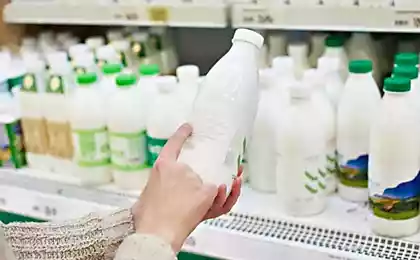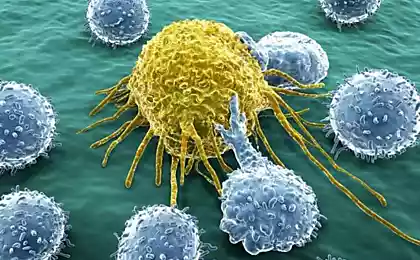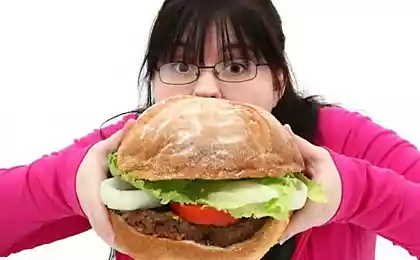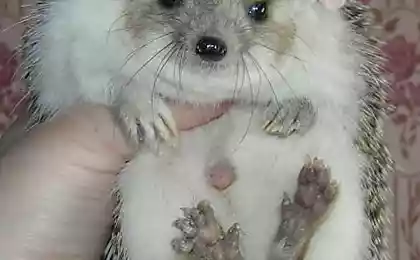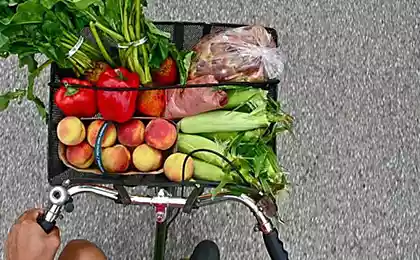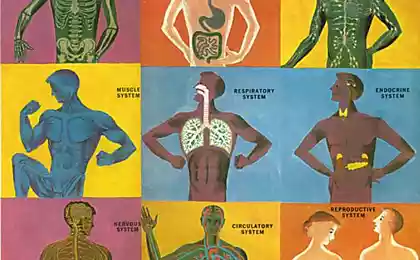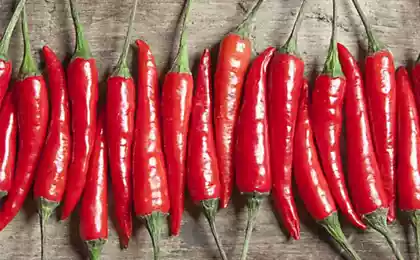328
Why Food Chemistry and Supplements Shouldn't Scare People
“Chemical food” is the horror of our time. People do not want to eat harmful chemicals, and want to eat healthy natural products. But what they mean by that is mostly myths.
When it comes to food, chemistry is now used as a curse. Chemistry is a fundamental property of our world, chemicals make up everything in the world, including man himself. And food is no exception.
First myth There can be food without chemistry. He can't. Chemistry in food is 100%.
Another question is whether these chemicals in food are taken from nature or synthesized by humans.
Second myth Everything natural is useful, and artificial is harmful. In fact, the natural is different only in that it occurs in nature, and only this.
Natural is not useful. For example, wildfires are a natural phenomenon, just like smallpox death, and steam heating is an artificial phenomenon. And what is useful and what is harmful?
Another one. myth All kinds of artificial food additives are a recent invention.
The world’s first artificial flavor was invented by a man who began to fry meat because the smell of fried meat does not exist in nature.
Smell and taste of fried meat This is the result of the interaction of substances that exist in raw meat when it is heated. And chemical interaction. The smell and taste of cheese is also artificial, as there is no cheese in nature. But man learned to make this product for a long time, and the purpose of the creation was not to improve the taste, but the desire to preserve the chemicals of milk.
Many plant substances that we tend to think of as useful simply because they are natural are actually plant chemical weapons.
They have been selected by evolution for maximum harm to anyone who wants to eat the plant. Many are poisons. For example, caffeine in a plant acts as an insecticide: it protects it from insects. In general, coffee can be safely considered a mixture of insecticides and flavors, because the aroma of coffee is essentially artificial.
Green coffee does not smell, and the “natural” smell of coffee is the result of artificial chemical reactions that occur in the beans when heated.
And what is, for example, vanillin, which we add to all kinds of confectionery products as a natural flavoring? From a chemical point of view, vanillin is an aromatic phenol and an aromatic aldehyde simultaneously.
I wouldn't want to eat that.
In the famous vanilla pods vanillin by nature does not appear in them only after ripening and falling. Vanillin is not needed by the plant, its purpose is to protect the seeds from harmful molds and bacteria. This is a substance that protects plants from eating, and only by chance did a person like its taste, which does not indicate its usefulness.
Same with mustard. The main function of allilisothiocyanate, which owes its burning mustard, is to scare away insects and herbivores larger. As such, it is not in the plant: it begins to form only when the tissues of the plant are damaged. Its synthesis is triggered when the leaves or seeds are damaged to cause maximum damage to the pest.
And only man learned to eat what was invented as a toxin, and call it useful. At the same time, the same substance obtained by methods of chemical synthesis is called harmful.
Toxic substances for protection from insects are also contained in cucumber bumps. A man eats nothing. In almonds and apricot contains a very strong poison cyanide, cyanide acid. This does not prevent people from enjoying them.
Molecules that create the smell of orange, located in the peel and in their formula more like gasoline than food, serve to protect the juicy pulp and so attract us with their smell.
Speaking of food additives, sodium glutamate is most often mentioned: it is in broth cubes, and in sausages, and in sausages. But it is this substance that determines the taste of meat – the so-called taste of umami, in fact, the taste of protein. It was discovered by Japanese professor Ikeda and in 1909 patented the method of obtaining it. But long before that, glutamate was the most abundant chemical molecule in our food. It is this substance that gives the taste to sausage, ham and any other meat products. Glutamate gives taste to tomatoes, and its concentration increases when the fruit ripens. Red tomatoes taste better than green ones in part because they have more glutamate. Man only learned to obtain sodium glutamate by bacteriological synthesis. And this artificial glutamate, according to the atomic-molecular theory, is no different from natural.
Food additives on the product packaging are indicated by the letter E with various digital indices. And this letter often scares the consumer.
This only means that the product contains well-defined and proven substances.
Often the same substances are present in large quantities in natural products. For example, an apple has a much larger set of different Es than any finished product. Although, in fact, this is not important: the origin of a substance does not determine its properties.
Cranberries contain more sodium benzoate than is allowed for canning.
If cranberries are driven according to tolerances for the content of preservatives, it should be prohibited, there is an overdose of preservatives in it.
What does she need them for? To protect yourself, prevent mold and bacteria from eating berries and seeds. But no one on this planet will suspect cranberries of what preservatives or drinks are suspected of. On the contrary, many people consume cranberries because of its beneficial antimicrobial properties, which, however, are exaggerated.
Parabens (parahydroxybenzoic acid esters) are also natural substances, plants use them to protect themselves from pests. They are used mainly in cosmetics. They're scared too. Often you can find advertising so-called cream without parabens. But this is possible only in three cases: 1) if, instead of safe and proven parabens, some less well-known and studied preservative is added to the cream; 2) the cream dies immediately after opening; 3) the manufacturer is not a fool and yet added parabens, but, following the fashion, lied.
Sodium nitrite is another subject of horror stories.
It is very easy to find it in a sausage: the fashionable gray-colored sausage does not contain sodium nitrite. But don't buy that sausage.
Before sodium nitrite was added to sausages, the so-called sausage disease - botulism - was quite common. The word "botulism" originates from the ancient Roman "sausage". Sodium nitrite reliably kills the bacterium that produces the deadly toxin. And if we talk about quantities, then 1 kg of spinach or broccoli will give you the same amount of nitrite as 50 kg of doctor sausage.
But here is a story about caviar, a delicacy product, which for a number of reasons is very prone to spoilage. For the preservation of caviar, the substance urotropin (E 239) was recently used, which has been banned in our country since 2010.
But this is the only preservative that worked in caviar. And now the caviar either dies out, or there are many other preservatives in it, more than allowed.
Or it is still good and safe, but with a banned urotropin. Urotropin was banned because it decomposes when stored to form formaldehyde, which is poison. But no one thought about the numbers. It's a miser. And we don't eat caviar with spoons. In addition, the same amount of formaldehyde that can be obtained with a jar of caviar with urotropin can be obtained by eating one banana.
Another myth. It is associated with the harmfulness of sweeteners that people who want to lose weight use instead of sugar.
For example, aspartame is a perfectly understandable molecule with understandable effects, and there are hundreds of studies confirming its safety.
A very common myth is that “the natural product is known which, and what you have synthesized there, solid impurities!”. This is total nonsense. For example, if you compare the grass of tarkhun and soda on flavors, then there are more impurities in natural tarkhun. At the same time, they are all known in soda, and in the grass we do not know which could have formed. In natural coffee, there are much more chemicals (at least a thousand), and their properties have been studied much less than in artificial coffee flavoring. To date, more than 8 thousand fragrant substances have been found in food. Of these, about 4 thousand are allowed to be used as flavorings, their properties have been studied, they are recognized as safe. About a hundred of these substances are prohibited: they were harmful. About 4,000 people have never been tested. Thus, consuming a flavoring, you are guaranteed to consume only substances from the tested 4,000.
Consuming natural, you eat everything: proven safe, untested, and necessarily proven harmful.
Finally, lovers of everything natural in the store will choose sausage or natural smoked ham, rather than smoked with liquid smoke. And from a safety point of view, a much more dangerous product will be chosen. Neither is the best choice in terms of health. But natural smoke contains many resins, carcinogens, which are separated during the production of liquid smoke. In fact, artificial smoking is much safer than natural smoking. It may not taste so good.
“We want to know the truth about food!” are the slogans of natural food advocates and chemical opponents. It’s great when people want to know the truth. But it is better to look for this truth not on TV or on women’s forums. Start with a textbook on food chemistry.
The truth about food is that all food is made up of chemistry. The truth is that if you make your own food, you know what you make it from, and you check it for safety.
Food chemistry is the science that makes our world a better place. And the other truth is, if you eat only organic food, if you rely on nature, you're making a mistake. Nature has no obligation to care about our safety. published
P.S. And remember, just changing our consumption – together we change the world!
Join us on Facebook and VKontakte, and we are also in Odnoklasniki
Source: vk.com/wiki_inventions?z=photo-56414092_380789056%2Falbum-56414092_00%2Frev
When it comes to food, chemistry is now used as a curse. Chemistry is a fundamental property of our world, chemicals make up everything in the world, including man himself. And food is no exception.
First myth There can be food without chemistry. He can't. Chemistry in food is 100%.
Another question is whether these chemicals in food are taken from nature or synthesized by humans.
Second myth Everything natural is useful, and artificial is harmful. In fact, the natural is different only in that it occurs in nature, and only this.
Natural is not useful. For example, wildfires are a natural phenomenon, just like smallpox death, and steam heating is an artificial phenomenon. And what is useful and what is harmful?
Another one. myth All kinds of artificial food additives are a recent invention.
The world’s first artificial flavor was invented by a man who began to fry meat because the smell of fried meat does not exist in nature.
Smell and taste of fried meat This is the result of the interaction of substances that exist in raw meat when it is heated. And chemical interaction. The smell and taste of cheese is also artificial, as there is no cheese in nature. But man learned to make this product for a long time, and the purpose of the creation was not to improve the taste, but the desire to preserve the chemicals of milk.
Many plant substances that we tend to think of as useful simply because they are natural are actually plant chemical weapons.
They have been selected by evolution for maximum harm to anyone who wants to eat the plant. Many are poisons. For example, caffeine in a plant acts as an insecticide: it protects it from insects. In general, coffee can be safely considered a mixture of insecticides and flavors, because the aroma of coffee is essentially artificial.
Green coffee does not smell, and the “natural” smell of coffee is the result of artificial chemical reactions that occur in the beans when heated.
And what is, for example, vanillin, which we add to all kinds of confectionery products as a natural flavoring? From a chemical point of view, vanillin is an aromatic phenol and an aromatic aldehyde simultaneously.
I wouldn't want to eat that.
In the famous vanilla pods vanillin by nature does not appear in them only after ripening and falling. Vanillin is not needed by the plant, its purpose is to protect the seeds from harmful molds and bacteria. This is a substance that protects plants from eating, and only by chance did a person like its taste, which does not indicate its usefulness.
Same with mustard. The main function of allilisothiocyanate, which owes its burning mustard, is to scare away insects and herbivores larger. As such, it is not in the plant: it begins to form only when the tissues of the plant are damaged. Its synthesis is triggered when the leaves or seeds are damaged to cause maximum damage to the pest.
And only man learned to eat what was invented as a toxin, and call it useful. At the same time, the same substance obtained by methods of chemical synthesis is called harmful.
Toxic substances for protection from insects are also contained in cucumber bumps. A man eats nothing. In almonds and apricot contains a very strong poison cyanide, cyanide acid. This does not prevent people from enjoying them.
Molecules that create the smell of orange, located in the peel and in their formula more like gasoline than food, serve to protect the juicy pulp and so attract us with their smell.
Speaking of food additives, sodium glutamate is most often mentioned: it is in broth cubes, and in sausages, and in sausages. But it is this substance that determines the taste of meat – the so-called taste of umami, in fact, the taste of protein. It was discovered by Japanese professor Ikeda and in 1909 patented the method of obtaining it. But long before that, glutamate was the most abundant chemical molecule in our food. It is this substance that gives the taste to sausage, ham and any other meat products. Glutamate gives taste to tomatoes, and its concentration increases when the fruit ripens. Red tomatoes taste better than green ones in part because they have more glutamate. Man only learned to obtain sodium glutamate by bacteriological synthesis. And this artificial glutamate, according to the atomic-molecular theory, is no different from natural.
Food additives on the product packaging are indicated by the letter E with various digital indices. And this letter often scares the consumer.
This only means that the product contains well-defined and proven substances.
Often the same substances are present in large quantities in natural products. For example, an apple has a much larger set of different Es than any finished product. Although, in fact, this is not important: the origin of a substance does not determine its properties.
Cranberries contain more sodium benzoate than is allowed for canning.
If cranberries are driven according to tolerances for the content of preservatives, it should be prohibited, there is an overdose of preservatives in it.
What does she need them for? To protect yourself, prevent mold and bacteria from eating berries and seeds. But no one on this planet will suspect cranberries of what preservatives or drinks are suspected of. On the contrary, many people consume cranberries because of its beneficial antimicrobial properties, which, however, are exaggerated.
Parabens (parahydroxybenzoic acid esters) are also natural substances, plants use them to protect themselves from pests. They are used mainly in cosmetics. They're scared too. Often you can find advertising so-called cream without parabens. But this is possible only in three cases: 1) if, instead of safe and proven parabens, some less well-known and studied preservative is added to the cream; 2) the cream dies immediately after opening; 3) the manufacturer is not a fool and yet added parabens, but, following the fashion, lied.
Sodium nitrite is another subject of horror stories.
It is very easy to find it in a sausage: the fashionable gray-colored sausage does not contain sodium nitrite. But don't buy that sausage.
Before sodium nitrite was added to sausages, the so-called sausage disease - botulism - was quite common. The word "botulism" originates from the ancient Roman "sausage". Sodium nitrite reliably kills the bacterium that produces the deadly toxin. And if we talk about quantities, then 1 kg of spinach or broccoli will give you the same amount of nitrite as 50 kg of doctor sausage.
But here is a story about caviar, a delicacy product, which for a number of reasons is very prone to spoilage. For the preservation of caviar, the substance urotropin (E 239) was recently used, which has been banned in our country since 2010.
But this is the only preservative that worked in caviar. And now the caviar either dies out, or there are many other preservatives in it, more than allowed.
Or it is still good and safe, but with a banned urotropin. Urotropin was banned because it decomposes when stored to form formaldehyde, which is poison. But no one thought about the numbers. It's a miser. And we don't eat caviar with spoons. In addition, the same amount of formaldehyde that can be obtained with a jar of caviar with urotropin can be obtained by eating one banana.
Another myth. It is associated with the harmfulness of sweeteners that people who want to lose weight use instead of sugar.
For example, aspartame is a perfectly understandable molecule with understandable effects, and there are hundreds of studies confirming its safety.
A very common myth is that “the natural product is known which, and what you have synthesized there, solid impurities!”. This is total nonsense. For example, if you compare the grass of tarkhun and soda on flavors, then there are more impurities in natural tarkhun. At the same time, they are all known in soda, and in the grass we do not know which could have formed. In natural coffee, there are much more chemicals (at least a thousand), and their properties have been studied much less than in artificial coffee flavoring. To date, more than 8 thousand fragrant substances have been found in food. Of these, about 4 thousand are allowed to be used as flavorings, their properties have been studied, they are recognized as safe. About a hundred of these substances are prohibited: they were harmful. About 4,000 people have never been tested. Thus, consuming a flavoring, you are guaranteed to consume only substances from the tested 4,000.
Consuming natural, you eat everything: proven safe, untested, and necessarily proven harmful.
Finally, lovers of everything natural in the store will choose sausage or natural smoked ham, rather than smoked with liquid smoke. And from a safety point of view, a much more dangerous product will be chosen. Neither is the best choice in terms of health. But natural smoke contains many resins, carcinogens, which are separated during the production of liquid smoke. In fact, artificial smoking is much safer than natural smoking. It may not taste so good.
“We want to know the truth about food!” are the slogans of natural food advocates and chemical opponents. It’s great when people want to know the truth. But it is better to look for this truth not on TV or on women’s forums. Start with a textbook on food chemistry.
The truth about food is that all food is made up of chemistry. The truth is that if you make your own food, you know what you make it from, and you check it for safety.
Food chemistry is the science that makes our world a better place. And the other truth is, if you eat only organic food, if you rely on nature, you're making a mistake. Nature has no obligation to care about our safety. published
P.S. And remember, just changing our consumption – together we change the world!
Join us on Facebook and VKontakte, and we are also in Odnoklasniki
Source: vk.com/wiki_inventions?z=photo-56414092_380789056%2Falbum-56414092_00%2Frev


